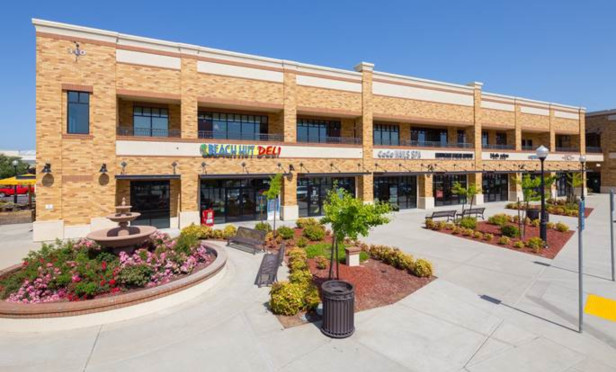 There are big benefits to adapting a leasing strategy to local the local market. The Osborne Group recently brought a mixed-use office and retail asset to full occupancy by focusing on growth industries in the market. Tri Commercial Real Estate purchased the property, a 18,480-square-foot, two story property in the Lincoln Gateway Center, and employed its affiliate The Osborne Group to handle leasing the property.
There are big benefits to adapting a leasing strategy to local the local market. The Osborne Group recently brought a mixed-use office and retail asset to full occupancy by focusing on growth industries in the market. Tri Commercial Real Estate purchased the property, a 18,480-square-foot, two story property in the Lincoln Gateway Center, and employed its affiliate The Osborne Group to handle leasing the property.
“The building itself is a two story building with retail on the first floor, which has always been relatively full,” Robb Osborne, a principal at Tri Commercial and The Osborne Group, tells GlobeSt.com. “There was one vacancy when we took over the property, and we backfilled that relatively quickly. What had struggled over the years was the second floor office space. The units were between 1,800 to 2,500 square feet per unit, and there were four units available when we got the property.”
Lincoln is a growing market with significant new home construction, so The Osborne Group focused on construction industries to lease the office space, which had been renovated and upgraded before the purchase of the asset. “The Lincoln market has always been driven by rooftops, and this particular property was built in 2007 at the top of the market,” says Osborne. “Lincoln is a tertiary market, but it is a growing market. Before the recession, Lincoln was actually one of the fastest growing cities in the country, and they are building homes in the market now. So, we focused on construction companies and construction-related industry professionals. We put an engineer in and two construction companies.”
Those three leases accounted for on of the office units. For the remaining unit, or 6,000 square feet, the owner invested $150,000 to convert the space into executive suites. “Lincoln is a smaller market with a lot of people working from home, we thought we could scale the remaining square footage. We converted the remaining space into executive suites,” says Osborne. “We improved two units and backfilled the space, and for the third unit, we signed a lease with an executive suite operator that signed a master lease. We took approximately 6,000 square feet and converted it to executive suites. With that strategy, we were able to get better rents per square foot.”
In the retail portion, the vacancy was filled quickly by a boutique fashion retailer. The retail portion has had stronger leasing, and retailers have been successful. “Beach Hut Deli moved to the property just before the acquisition, and it has done extremely well,” adds Osborne. “They moved from another location in the community and was able to double its revenue by being in a more urban market.”
The project too a total of 12 months to reach full occupancy in both the retail and office portions, and the greater Lincoln Gateway Center is also fully occupied.
© Touchpoint Markets, All Rights Reserved. Request academic re-use from www.copyright.com. All other uses, submit a request to [email protected]. For more inforrmation visit Asset & Logo Licensing.






